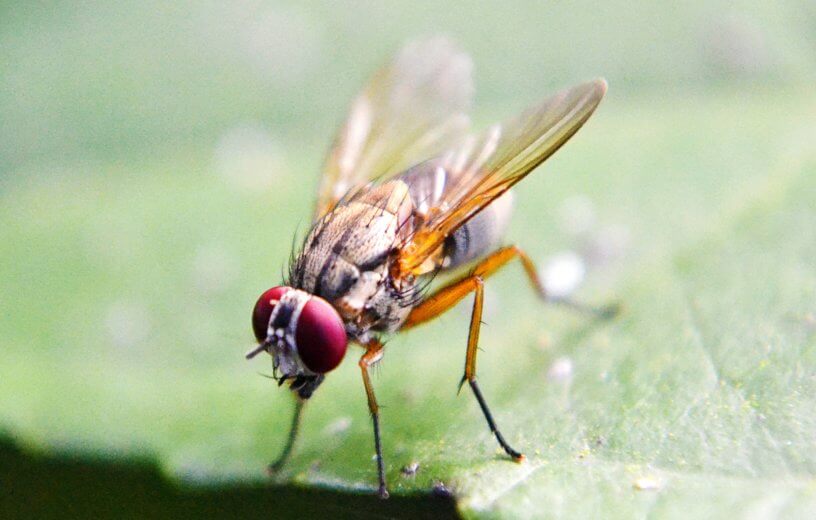CHICAGO — In the ongoing battle against antibiotic resistance, scientists are constantly trying to discover potential new antibiotics. In a new study, researchers at the University of Illinois Chicago have uncovered a remarkable compound from an unexpected source: fruit flies. The research sheds light on a natural peptide called drosocin, found in fruit flies, which exhibits powerful antibacterial properties.
The team of scientists discovered that drosocin acts by binding to ribosomes, essential cellular structures responsible for protein synthesis. By interfering with the ribosomes’ function, drosocin prevents bacteria from producing vital proteins required for their survival and growth. This groundbreaking mechanism makes drosocin only the second known peptide antibiotic that halts translation termination, following the discovery of apidaecin in honeybees by the same group in 2017.
To better understand drosocin’s antibacterial activity, the researchers produced the peptide and hundreds of its mutants within bacterial cells. According to a university release, they observed that drosocin and its mutants induced self-destruction in bacterial cells, effectively eradicating them. This exciting result demonstrates the potential of drosocin as a potent antibacterial agent.
Scroll down to see 3 ways people can encounter antibiotic-resistant bacteria

While drosocin and apidaecin share a similar mode of action, the researchers discovered that their chemical structures and binding mechanisms to the ribosome differ. By delving deeper into these structural variances, scientists can unlock valuable insights for engineering new antibiotics. By combining the strengths of drosocin and apidaecin, researchers hope to develop innovative antibiotics capable of tackling the ever-evolving threat of drug-resistant bacteria.
The study’s findings shed light on the intricate mechanisms underlying the fruit fly’s immune system and its ability to fend off bacterial infections. By leveraging this knowledge, scientists can design new therapeutic strategies to combat antibiotic resistance.
As scientists continue to explore the potential of drosocin and other peptides, we move closer to a future where drug-resistant bacteria can be effectively treated, safeguarding the health and well-being of people worldwide.
The study is published in the journal Nature Chemical Biology.
3 situations people can encounter harmful superbugs:
- Hospitals: Despite being a place people go to get healthy, studies show antibiotic-resistant superbugs often contaminate hospital rooms, beds, and floors. A new study finds that these deadly bacteria can even make its way into the ICU. Researchers say an ICU in Hangzhou, China was entirely contaminated with a virulent strain that infected one in three patients — creating a nightmare for healthcare professionals.
- Meat: One of the strains people are most familiar with is E. coli, and meat products are a common source of these infections. Recently, researchers in Spain say they discovered multidrug-resistant E. coli strains in 40 percent of chicken, turkey, beef, and pork products for sale in shops across the country.
- Pets: Dogs and cats may be passing antibiotic-resistant “superbugs” to their owners, a new study warns. Researchers discovered one pet in the United Kingdom and six from Portugal were carrying similar antibiotic-resistant bacteria as their owners. These could include E. coli and other strains linked to pneumonia.

